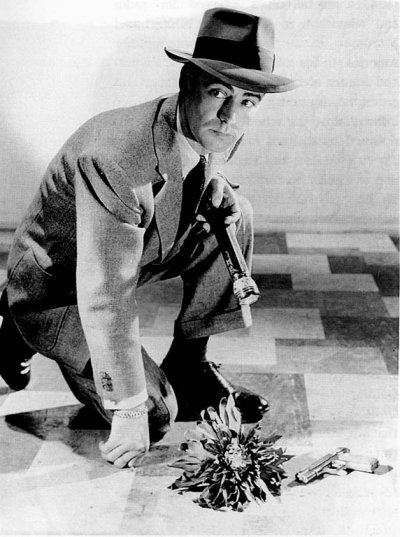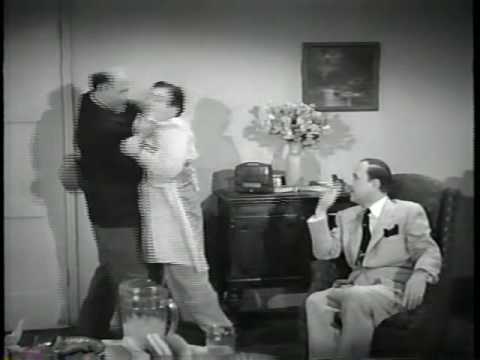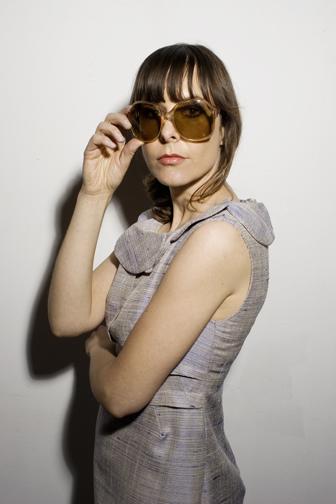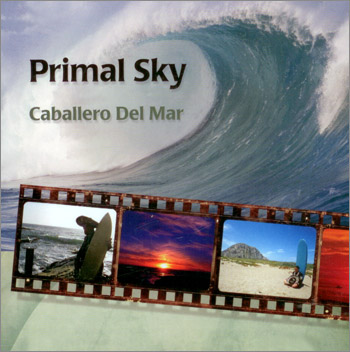The Blue Dahlia
Written by Joe D on February 22nd, 2010
The story goes that Paramount desperately needed to make a film in a hurry, Alan Ladd their box office giant was due to report for military service and they wanted a film to exploit his fame before he went in.

Ladd, a grip turned actor, for a non-actor he’s very good
So they asked Raymond Chandler to write a script in record breaking time. He asked for and got a bunch of special conditions that he insisted were absolutely necessary for him to finish on time. He wanted to work at home, he needed two cars and drivers at his disposal, round the clock stenographers and nurses and an unlimited supply of alcohol. Chandler felt the only way he could deliver was to be constantly inebriated, I guess this got his creative juices flowing. He delivered the script. Is it a film noir? Maybe but it does veer from the form in certain significant ways. The story starts with three returning WWII vets arriving in Hollywood, U.S.A., Alan Ladd, William Bendix and Beaver Cleaver’s future dad Hugh Beaumont. They stop in a bar for a celebratory drink and we learn that Bendix has a “plate in his head” from a war wound, also he is driven to near insanity every time he hears “monkey music” or big band swing/jazz. A soldier playing a tune on a juke box is the object of Bendix’s maniacal ire. This is an interesting twist, I always felt that WW II era big band music was almost a drug, that it relaxed soldiers far from home, reassuring them with it’s soporific harmonies that everything was going to work out, they’d return home to Mary Lou and grow old under the apple tree. Here Chandler takes the musical promise of normalcy and shines a bright light of reality in our faces by having it inspire madness and murder in the damaged mind of a returned veteran. The other false promise, the faithful wife awaiting her returning husband is likewise demolished when Ladd finds a wild party in full swing at his wife’s “bungalow apartment”, not only that but he sees his spouse smooching on nightclub owner-racketeer Howard DaSilva.

Evil Sparkly Doris with corrupt nightclub owner/paramour DaSilva
She delivers the coup-d’etat by informing Ladd that their son Jimmy died after she drove drunk and crashed. Doris Dowling plays the evil wife and she is pure nasty badness. OK, usually the femme fatale dupes the man, lies to him, appears sweet or sexy somehow lures him to his doom, like Eve with her Apple, not Doris! She is so nasty and evil she’s lucky Alan Ladd doesn’t kill her himself. She winds up dead pretty quickly which is another curve thrown in the noir structure, the femme fatale is killed in Reel One! Then we get some great Chandler set pieces, Ladd meets Veronica Lake in the rain, (Chandler called her”Moronica” Lake), the house dick (Will Wright) starts blackmailing everyone in sight and is treated like dirt by everyone in the film! He is at the absolute bottom of humanity, I found myself laughing out loud as one character after another insulted, degraded, and humiliated him, maybe I should say tried to humiliate him because he didn’t care, he just wanted a few bucks, or a cigar or whatever he could cadge from anyone in his path.

Ladd and Lake in fake Malibu. The poor, beautiful junkie paid dearly for fame.
There’s an incredible character- Leo(Don Costello), he’s DaSilva’s partner in the night club and he is great, a true Chandler character, a gangster that wears thick glasses, he looks more like an accountant than the cold blooded killer that he is. I think he’s a truer picture of what a lot of these racketeers were like, they considered themselves business men and killing was simply a part of their business. A sharp observer like Chandler surely based this guy on a real gangster in the papers at that time. Then there’s the obligatory kidnap the hero, take him out of town, tie him up, beat him into unconciousness scene. Just like in The Big Sleep where it happens to Bogie. A great bit of action occurs when Leo, who has injured his foot in a struggle with Ladd, is soaking his toe in a basin of hot water supplied by his kind henchman, Ladd awakens from being slugged and tips a table over that smashes down right on Leo’s injured toe! The reaction from Leo is classic! And I’ve never seen that particular move in a fight scene, another Chandler stroke of genius. There’s plenty of snappy patter such as “I’m not that kind of a rat” “Oh,what kind of a rat are you? or when Lake picks up Ladd in the rain ” I guess you could get wetter if you lay down in the gutter” etc. Chandler knew how to write that kind of stuff. Another anti-noir element is the lighting, there’s no use of shadows, venitian blinds, smoky silhouettes in this film. It actually looks like a Monogram el cheapo. The sets are crummy, under decorated, limned in just a few shades of gray, they actually remind me of the sets from the Abbot and Costello television show.
The whole production looks grade Z, which is kind of surprising since Ladd and Lake were big box office at the time, having recently struck gold in This Gun For Hire. Another weird aspect is the almost total lack of background music. The only music in the film is the big band stuff that drives Buzz (Bendix) into homicidal amnesiac rages. Most films of this era had incidental music playing under dialog scenes. This has none. Was this a budgetary consideration? I don’t know, the flat lighting and skimpy set design speaks more of the rapidity with which they needed to make this film, they were under the gun with Ladd’s induction looming. But I feel that the cheapness of the sets, the flat lighting and the lack of music works for this film, it makes it more creepy, it’s harder to dismiss it as a piece of fluff, it gets under your skin like the home movies of a serial killer. It’s more real, lifelike in it’s mundaneness, not movielike.
The one prop they seem to have spent any money on at all is the neon sign that bedecks the front of DaSilva’s nightclub, a large gaudy Blue Dahlia. That’s the name of the club. I think it represents a lot to Chandler and this story. Da Silva publicizes his club by handing out Dahlias dyed blue. Veronica Lake picks at one absent mindedly in DaSilva’s office triggering an outburst from Buzz “She was picking at a flower just like that when I killed her!” Buzz the disturbed veteran is the murderer! The Dahlia, an exotic hot house flower represented sex,debauchery, corruption to Chandler. Just like the opening scene in The Big Sleep that takes place in General Sternwood’s green house. Exotic flowers are perverse to Chandler, decadent. The fatal combination of Dahlia and “monkey music homicidally unhinges Buzz. I think it played out like this, Buzz met Johnny’s wife in a bar, not realizing who she was. They went to her bungalow to have sex, he couldn’t perform, she taunted him, tore up the flower( masturbated?) drove him to murder.

Femme Fatale Doris about to get her comeuppance from Shell Shocked Steel Plated Buzz
The film ends with Will Wright being named as the killer but in Chandler’s original script it was Buzz, the Navy intervened and demanded the script be changed, they didn’t want a veteran to be portrayed as a murderer. Chandler strongly objected to this but he was overruled. The film was a big hit and several spin-offs or rip offs were made in it’s wake, notably The Blue Gardenia by Fritz Lang. Shortly after this film’s release a young woman was hanging out in a drugstore in Long Beach, she had wavy black hair and a soda jerk referred to her as The Black Dahlia in a joking reference to this film. Thus pinning a name on one of the most famous unsolved murder cases in the history of L.A. and further assuring a place in history to this strange bit of celluloid.

Beth Short bedecked with flowers, the real Black Dahlia
The beautiful Veronica Lake was in reality a troubled young woman. Her husband and director Andre deToth revealed that she was a heroin addict and an alcoholic during her meteoric rise to fame. She was found near the end of her life working as a bar maid in NYC. She achieved the fame girls like Elisabeth Short ( Black Dahlia) came to Hollywood to find yet she wound up working in a bar, a fate Beth Short might have shared if she’d lived.








